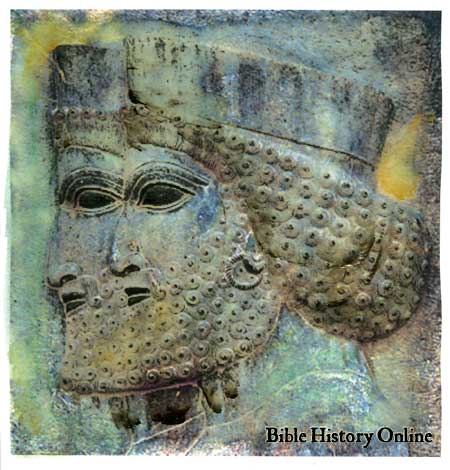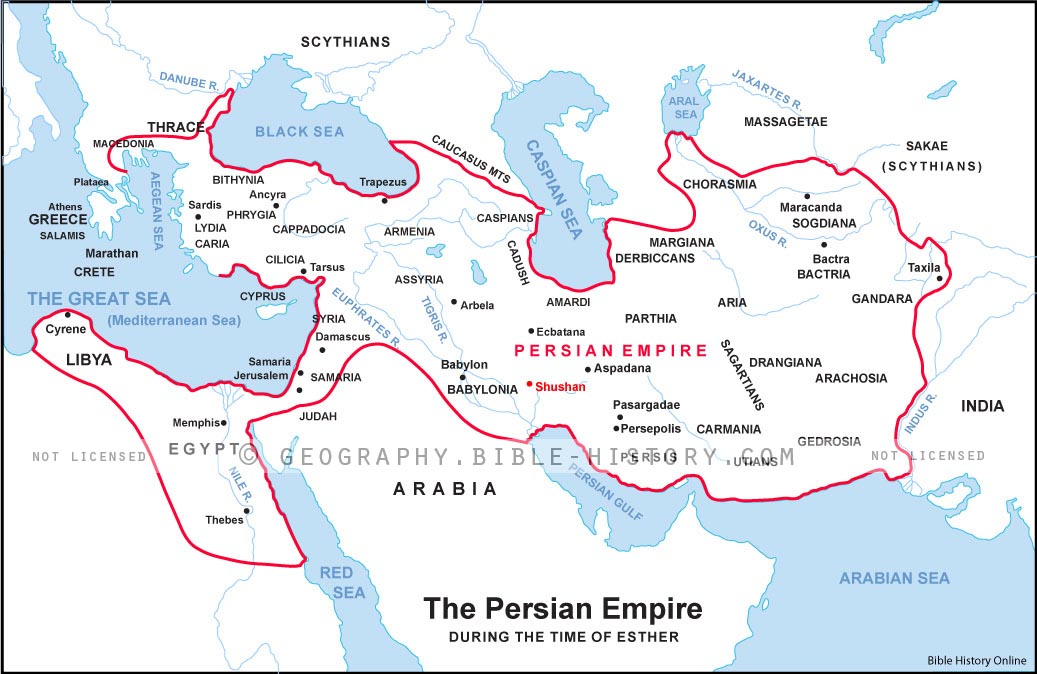Esther
Images and Notes
The Book of Esther
Esther
1:16-18 - And Memucan answered before the king and the
princes, Vashti the queen hath not done wrong to the king only,
but also to all the princes, and to all the people that [are] in
all the provinces of the king Ahasuerus. For [this] deed of the
queen shall come abroad unto all women, so that they shall
despise their husbands in their eyes, when it shall be reported,
The king Ahasuerus commanded Vashti the queen to be brought in
before him, but she came not. [Likewise] shall the ladies of
Persia and Media say this day unto all the king's princes, which
have heard of the deed of the queen. Thus [shall there arise]
too much contempt and wrath.
Esther
6:12-14 - And Mordecai came again to the king's gate. But
Haman hasted to his house mourning, and having his head covered.
And Haman told Zeresh his wife and all his friends every [thing]
that had befallen him. Then said his wise men and Zeresh his
wife unto him, If Mordecai [be] of the seed of the Jews, before
whom thou hast begun to fall, thou shalt not prevail against
him, but shalt surely fall before him. And while they [were] yet
talking with him, came the king's chamberlains, and hasted to
bring Haman unto the banquet that Esther had prepared.
The Old Testament - A Brief Overview
Bible Survey - Esther
Hebrew Name -
Ester
"concealed"
Greek Name -
Aster
(after the Persian word for star)
Author - Mordecai (According to Jewish tradition)
Date - From 521-495 BC Approximately
Theme of Esther - The Jews in Captivity were saved from annihilation by a Jewish
queen
Types and Shadows - In Esther Jesus is the savior of his people
ARCHAEOLOGY
Persian Attendants
from the Hall of Xerxes

Esther 1:2-4 "In the third year
of his reign, he made a feast unto all his princes and
his servants; the power of Persia and Media, the nobles
and princes of the provinces, being before him: When he
shewed the riches of his glorious kingdom and the honour
of his excellent majesty many days, even an hundred and
fourscore days."
These two royal Persian
attendants are depicted in a relief scene at the great
hall of Xerxes from the Harem of Xerxes at Persepolis.
This discovery of ancient Persian servants of Xerxes
from the 5th century BC is important in the study of
Biblical Archaeology and the Persian Period.
Summary of The Book of Esther
The book of Esther was written during a time
when the Persian Empire ruled the world and Ahasuerus (probably
Xerxes I) was the king of Persia. The events in the book of
Esther probably took place around 521-495 BC. This was during a
time just before the wall of Jerusalem was rebuilt. The book of
Esther clearly demonstrates God's love for his people even when
they are in a foreign land far away from the land of their
inheritance. One interesting point is that the name of God is
never mentioned in the book of Esther, nor is there any mention
of any kind of worship. The reason for this is uncertain but
most likely it would have been forbidden to mention the name of
the God of Israel. For whatever reason this is, there are clear
intimations of God especially when you hear the words of
Mordecai "who knows whether you have not come to the kingdom for
such a time as this" (Esther 4:14). In the book of Esther we
discover the origin of the Jewish feast of Purim, as well as
some very important historical information concerning the Jews
while they were in captivity, as well as their deliverance from
total annihilation while in the land of Persia. The Septuagint
version of the Hebrew text contains 107 extra verses (see
The Rest of Esther) that nearly all scholars agree were
written later than the Hebrew canon based on internal and
external evidence.
Quick Reference Map

Map of the Persian Empire During
the Time of Esther (Click to Enlarge)
The contents of the book of Esther may be summarized as
follows:
Outline of the Book of Esther
1 ) The deposition of Queen Vashti, the wife of the Persian ruler Ahasuerus,
for her refusal to appear before the guests of the king (Esther 1). It has
often been suggested that the Queen refused on grounds of modesty, but the
tradition which has arisen around her suggests that her refusal is just as
likely to have been the result of simple spitefulness. In order to keep such an
attitude from becoming general, thus upsetting the domestic balance, Ahasuerus
removed her from the throne and from his presence.
2 ) The choice of Esther as Queen, after an involved process of elimination
(Esther 2:1-20).
3 ) Mordecai discovers a plot against the life of the king (Esther 2:21-23).
4) Haman's plot to destroy the Jews (Esther 3-4). Because of the refusal of
Mordecai to pay homage to Haman, a man "above all the princes" in the Persian
government, the latter influenced the King to issue a decree calling for the
extermination of the Jews. Mordecai persuaded Esther to intervene, at the risk
of her life, on the Jews' behalf.
5 ) Esther's successful petition (Esther 5-8:2 ) . Finding favor with Ahasuerus,
Esther revealed the heinous plot of Haman. The result was that Haman was hanged
and Mordecai received his long-deserved honor for having saved the king's life.
6 ) The deliverance of the Jews (Esther 8:3-9:16). Although the decree of the
King concerning the Jews could not be rescinded, it was counteracted by the
issuing of another decree which allowed the Jews to defend themselves.
7 ) The Feast of Purim (Esther 9:17-32). To celebrate their deliverance, the Jews
instituted the feast of Purim. This feast is still observed and is a time of
great joy among Jews.
8 ) A description of Mordecai's greatness (Esther 10).
Quick Reference Maps -
Esther
The Persian Empire at the Time of Esther - According to
Esther 1:1 King Ahasuerus (Xerxes) ruled over 127 provinces from
India to Ethiopia. The Book of Esther began in the third year of
the reign of Ahasuerus which was around 484 BC during a great
feast in Shushan (Susa). Xerxes had just put down rebellions in
Egypt and Babylon, and was preparing to invade Greece.
Nehemiah Maps
Jerusalem Rebuilt by Nehemiah - The book of Nehemiah records
in the third chapter a description of the course of the walls,
beginning on the northeast side of Jerusalem and moving
counterclockwise. His intention was not to be too exhaustive in
the details.
Ezra Maps
Zerubbabel and Ezra's Journey to Restore Jerusalem -
Zerubbabel, of the house of David heeded the decree of Cyrus to
allow the Jews to return and restore Jerusalem and later more
Jews including Ezra and Nehemiah returned to Jerusalem.
The Persian Empire in the 6th Century BC - The great rulers
of the Persian Empire during the 6th century BC were Cyrus the
Great, Cambyses, and Darius I the Great.
The Persian Empire in the 5th Century BC - During the 5th
centuries BC the Persian Empire expanded under various rulers:
Darius I, Xerxes I (Ahasuerus), and Artaxerxes I.

Esther Resources
The Return From Babylon
More About the Book of
Esther
Esther in the Picture
Study Bible
Timeline of the Ancient
World
Back to the Old Testament
Back to Bible
History Online








